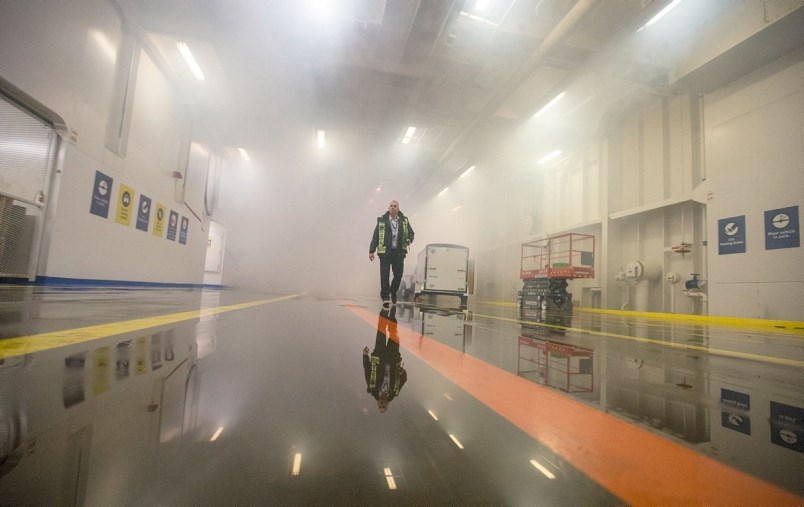As B.C. Ferries looks to the future, it’s thinking a lot about self-driving cars and being able to re-invent itself.
It’s possible that in 20 years, most customers will be using “an autonomous ride-hailing car to come to the terminal and just walking on because they are going to be picked up by an autonomous vehicle on the other side,” says Mark Collins, president of B.C. Ferries.
“What would that mean for your terminal?” he asked, while touring the Swartz Bay terminal. “All of a sudden, maybe there’s no cars down here and it’s just trucks and we have 2,000 people waiting to walk on.”
Designing ferries means building adaptable ships that can respond to new uses and trends.
“We keep most of our ships for 50 years, and a lot happens in 50 years,” Collins said.
B.C. Ferries plans 20 years ahead and beyond. Collins suggests that self-driving cars might deliver profound changes to ferry use.
“That one is coming fast. Autonomous vehicles could be on us in the next five to seven [years].”
That’s one reason why the next generation of ferries will be designed with flexible spaces, similar to hotels where flexible walls are used to create different sizes of meeting spaces.
“Imagine an upper car deck today that is full of cars but is designed with the electrical and ventilation and plumbing systems [installed] so that you could convert it to a passenger space in the future,” he said.
“Imagine a Spirit Class ferry with three passenger decks instead of two because you would have a need for that much more seating area.”
Reconfiguring existing ferries — by adding another restaurant, for example — can be prohibitively expensive, Collins said.
Because the future is unknown, “we have to be ready for whatever the alternatives might be,” he said.
If autonomous vehicles become common, a terminal would need more space for foot passengers, plus areas for self-driving vehicles to arrive and depart, and traffic areas would look more like a truck-handling facility.
Foot passenger areas at Swartz Bay, Horseshoe Bay and Tsawwassen already need major expansions, Collins said.
Every passenger wants a different experience during their trip. Some want a quiet ride and bring their own snacks, while others head to restaurants or work stations.
“If there is a demand for it and if the customers are happy to receive such a service, then we should look at providing it,” Collins said.
By designing ships to be flexible, “we can keep refreshing the customer experience as customers’ choices and desires change.”
Amenities and services help keep fares down, Collins said, pointing to parking lot revenue, drop-trailer services, B.C. Ferries Vacations, on-board restaurants and gift shops. “If magically overnight we turned all that stuff off, fares would probably go up 15 to 20 per cent.”
These services are optional and profitable, he said. The benefit to users is that they don’t have to use them if they don’t want to.
Look to Europe to see a wide range of cruise-like experiences offered by upscale ferry services. These ships, however, typically carry large numbers of passengers between large European cities, on longer trips than we normally see in B.C.
Brittany Ferries, travelling between England, France and Spain, features spa treatments, singers, magicians, cinemas, virtual-reality experiences, indoor and outdoor pools, shopping, games and children’s entertainers.
The Tallink Silja Line, running between Sweden, Finland and Estonia, offers nightclubs and bars, conference and meeting areas, and saunas and beauty salons.
Reducing the impact B.C. Ferries vessels have on the environment is another factor, already appearing in new and existing ferries.
Two new minor-class ferries being constructed by Damen Shipyards Group, of the Netherlands, will be equipped with a hybrid ultra-low-sulphur diesel-electric, battery-power generation and propulsion system that will use onboard electric power. The onboard batteries’ capacity can be expanded to allow full electric operation once shore-side charging systems are available.
Just like automobiles running on electric power, these ships will be quieter. Their hulls, propellers and thrusters are designed to minimize underwater noise as the needs of southern-resident killer whales are considered.
The Spirit of British Columbia ferry is in Poland for a modernization that includes converting it to liquid natural gas and ultra-low-sulphur diesel fuel. The Spirit of Vancouver Island will be converted the same way.




